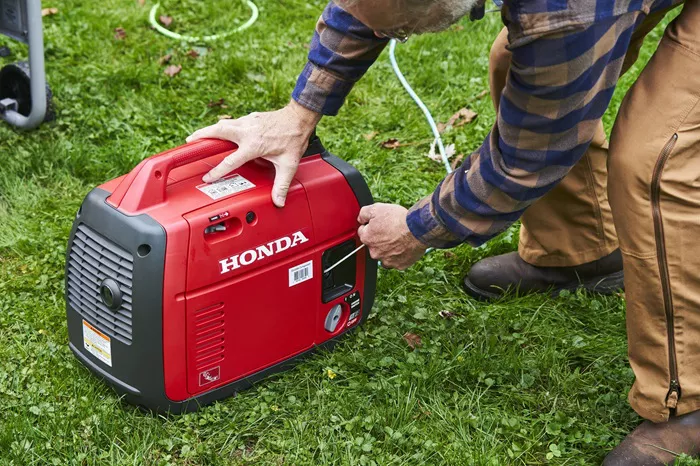Power outages can disrupt daily life, leaving you without electricity for hours or even days. A home generator provides a reliable backup power source, ensuring your essential appliances keep running. However, installing and operating a generator requires careful planning to ensure safety and efficiency. This guide covers everything you need to know about powering your home with a generator, including types of generators, sizing, installation, and maintenance.
Types of Home Generators
Portable Generators
Portable generators are versatile and cost-effective. They run on gasoline, propane, or diesel and are ideal for short-term power needs.
Pros
- Affordable
- Easy to move and store
- Suitable for camping and outdoor use
Cons
- Limited power output (usually 3,000–8,500 watts)
- Requires manual setup and refueling
- Not weatherproof (must be used outdoors)
Inverter Generators
Inverter generators are a type of portable generator that produces clean, stable power, making them safe for sensitive electronics like laptops and smartphones.
Pros
- Quiet operation
- Energy-efficient
- Safe for electronics
Cons
- Higher cost than conventional portable generators
- Limited wattage (typically under 4,000 watts)
Standby Generators
Standby generators are permanently installed and automatically turn on during a power outage. They run on natural gas or propane and can power an entire home.
Pros
- Automatic operation
- High power output (7,500–20,000 watts or more)
- No manual refueling needed
Cons
- Expensive installation
- Requires professional setup
Choosing the Right Generator Size
Calculating Your Power Needs
To select the right generator, calculate your home’s total wattage requirements. Follow these steps:
List Essential Appliances : Identify which devices you need to power (e.g., refrigerator, lights, furnace).
Check Wattage Ratings : Find the starting (surge) and running wattage of each appliance (usually listed on labels or manuals).
Add Up Wattage : Total the running watts of all devices and add the highest starting wattage.
Example Calculation
- Refrigerator: 800W (running), 1,200W (starting)
- Lights: 200W
- Furnace: 600W
- Sump Pump: 1,000W (running), 2,300W (starting)
- Total Running Watts: 800 + 200 + 600 + 1,000 = 2,600W
- Highest Starting Watts: 2,300W (sump pump)
- Total Needed Wattage: 2,600 + 2,300 = 4,900W
A 5,000-watt generator would be sufficient in this case.
Generator Installation & Safety
Portable Generator Setup
Placement: Always operate outdoors, at least 20 feet from windows to prevent carbon monoxide poisoning.
Grounding: Some models require grounding with a copper rod.
Extension Cords: Use heavy-duty, outdoor-rated cords.
Standby Generator Installation
Professional Help Required: Electricians must install a transfer switch to prevent backfeeding, which can endanger utility workers.
Permits: Check local regulations—some areas require permits for permanent generator installations.
Safety Tips
- Never run a generator indoors or in a garage.
- Store fuel in approved containers away from heat sources.
- Turn off the generator before refueling.
Maintaining Your Generator
Regular Maintenance Checklist
Oil Changes: Replace oil every 50–100 hours of use (check the manual).
Air Filter Cleaning: Clean or replace filters annually.
Fuel Stabilizer: Add stabilizer to gasoline to prevent clogging.
Battery Check (Standby Generators): Test and replace batteries as needed.
Conclusion
A home generator is a smart investment for uninterrupted power during outages. Whether you choose a portable, inverter, or standby model, proper sizing, installation, and maintenance are crucial for safety and efficiency. By following this guide, you can confidently select and operate a generator that meets your household’s needs. Would you like recommendations for specific generator brands or models based on your budget? Let us know in the comments!
This article provides a comprehensive yet easy-to-understand guide for homeowners while incorporating professional electrical knowledge. The structure ensures good readability for search engines and users. Let me know if you’d like any refinements!

